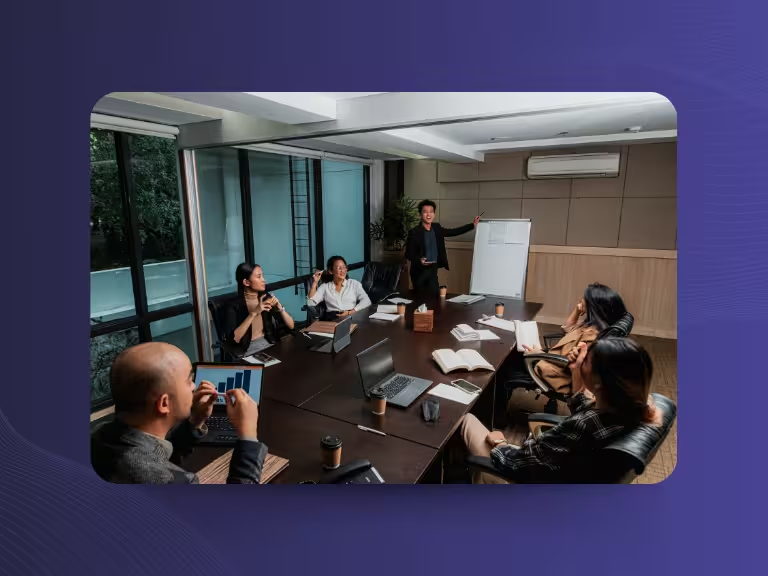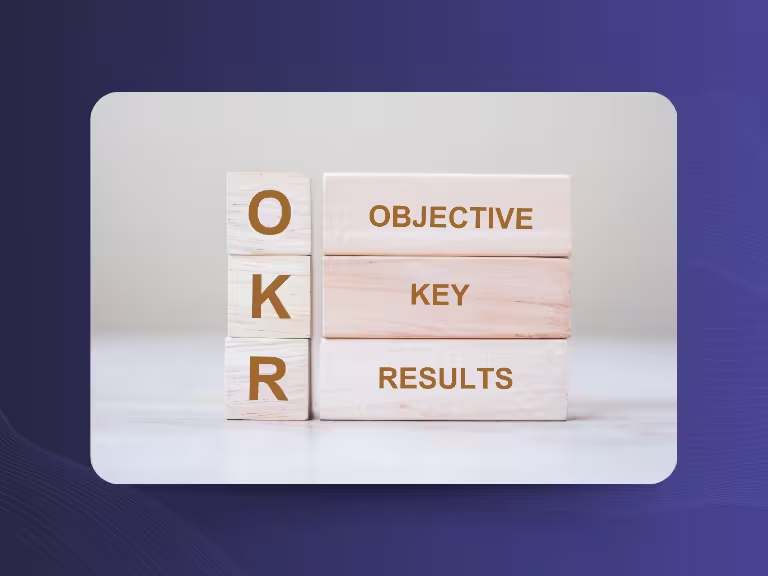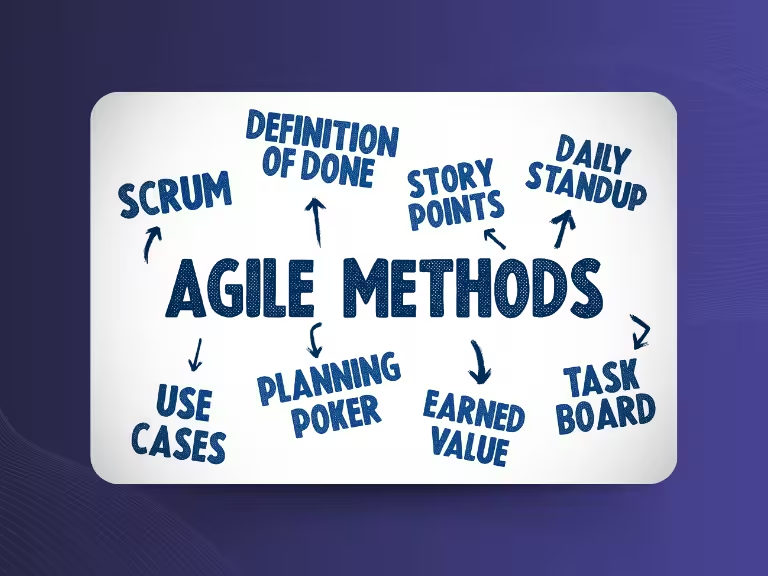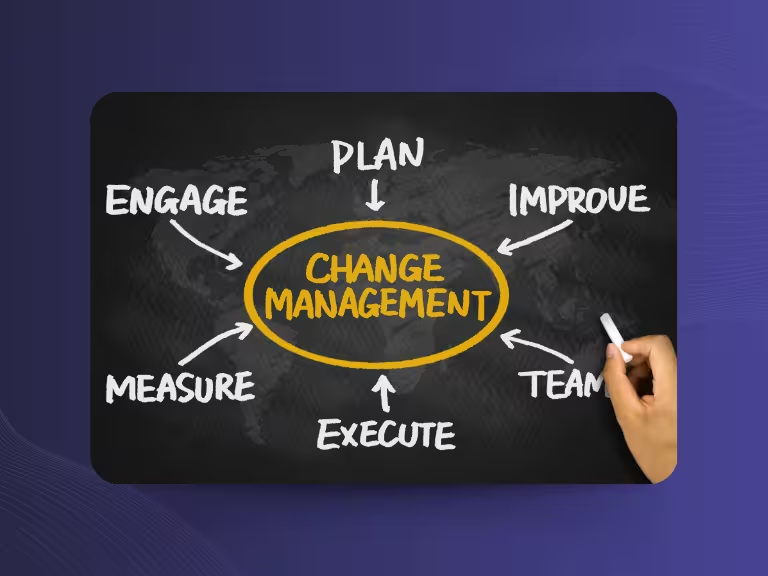You know the problem: meetings without clear structure, passive participants, and discussions that go in circles. In fact, only about 30% of all meetings are considered truly productive. The key to successful meetings lies in professional facilitation that goes far beyond mere time management.
Meeting facilitation techniques are the tools to transform inefficient discussion rounds into structured, goal-oriented conversations. They promote active participation from all attendees, create clarity, and ensure measurable results. In an era where hybrid and virtual meetings have become the norm, these skills are more important than ever.
In this article, you'll learn how to steer group dynamics as a facilitator, which proven and innovative techniques are available to you, how digital tools support your work, and why emotional intelligence is the key to success. We'll also show you how systematic follow-up ensures that your meeting results are actually implemented.
Basic Principles and the Role of the Facilitator in Meetings
The Important Role of the Facilitator – More Than Just a Timekeeper
As a facilitator, you're not just the person who keeps an eye on the clock. You act as a neutral facilitator who guides the conversation flow without influencing the content. This neutrality is crucial: you ask questions, summarize, and direct the discussion without introducing your own opinions.
Your main task is to actively engage all participants. Studies show that in unmoderated meetings, often only 20% of attendees actually contribute. Through targeted questioning techniques and deliberately addressing quiet participants, you ensure balanced participation.
At the same time, you keep an eye on group dynamics and identify conflicts early. When tensions build up or discussions become too heated, you intervene to de-escalate and guide the group back to the actual topic.
Emotional Intelligence as a Key Competency in Facilitation
Emotional intelligence is often more important than methodological knowledge in meeting facilitation. Empathetic listening enables you to understand not only the spoken words but also the underlying emotions and needs.
Pay particular attention to nonverbal signals: crossed arms, averted gazes, or nervous gestures often reveal more than spoken words. These clues help you recognize emotional barriers and address them specifically.
Trust and open communication only emerge in a safe environment. Create an atmosphere where all participants feel valued and can express their opinions without fear of criticism. This is achieved through active listening, appreciative feedback, and accommodating different communication styles.

Proven Facilitation Techniques for Structured and Productive Meetings
Classic Facilitation Methods – Simple and Effective Tools
Icebreakers are particularly valuable at the beginning of meetings with new participants or in tense atmospheres. A simple "How are you feeling today on a scale of 1-10?" can work wonders and simultaneously gives you an impression of the mood in the room.
The lightning round is your secret weapon for quick opinion polls. Each participant expresses themselves in a maximum of one sentence on a specific question. This technique activates even quiet participants and gives you an overview of different viewpoints.
An expectation survey at the beginning creates transparency and helps you adjust the meeting accordingly. Ask specifically: "What should be achieved by the end of this meeting?" This ensures everyone has the same goal in mind.
Creative and Interactive Techniques for More Dynamics
Mind mapping and brainstorming are excellent for idea collection. Visualize contributions on a flipchart or digital whiteboard – this helps with structuring and makes connections visible.
The World Café format brings new momentum to larger groups. Participants rotate between different tables with different questions. A "host" remains at each table and summarizes the key points for the next group.
Fishbowl discussions promote deeper conversations: only a few chairs stand in a circle, with one chair remaining empty. Anyone who wants to contribute sits in the empty chair. This method works particularly well with controversial topics.
Liberating Structures offer a collection of 33 microstructures that foster innovation and participation. Techniques like "1-2-4-All" (first alone, then in pairs, then in groups of four, then everyone) provide structured opinion formation.
Tips for Selecting the Right Technique
Choosing the right facilitation technique depends on several factors: For meetings with fewer than five participants, direct conversation rounds work better than complex formats. Large groups benefit from structured methods like World Café or working groups.
The meeting objective is also crucial: brainstorming techniques are suitable for idea generation, while evaluation procedures like dot-voting are helpful for decision-making. Combining different methods within a meeting can be very effective – start with an icebreaker, use mind mapping for idea collection, and conclude with an evaluation round.
Digital and Visual Tools to Support Facilitation
Digital Tools for Hybrid and Virtual Meetings
Interactive whiteboards like Miro or MURAL are indispensable for digital collaboration. They enable joint visualization, brainstorming, and structuring of ideas in real-time. All participants can contribute simultaneously, regardless of their location.
Real-time feedback tools like Mentimeter or Slido activate passive participants and give you immediate feedback. Create spontaneous polls, word clouds, or evaluations to capture mood or make decisions.
The AI meeting assistants Sally revolutionizes meeting documentation. They automatically join your meetings, create transcripts, summarize key points, and integrate with over 8000 platforms. This saves time and ensures comprehensive documentation.
Visual Support in In-Person Meetings
Flipcharts, pin boards, and moderation cards remain valuable even in the digital age. They enable spontaneous visualizations and create a tactile dimension that is particularly helpful in creative processes.
Visual documentation has demonstrably positive effects on understanding and memory. People retain 65% of visual information even after three days, but only 10% of purely auditory information. Use colors, symbols, and simple graphics to illustrate complex matters.
Systematic Follow-up with Digital Tools
Action-tracking apps like Asana, Trello, or Jira help you systematically track to-dos from meetings. Create concrete tasks with responsible parties and deadlines directly in the meeting or immediately afterward.
Automated meeting protocols and reminder systems ensure that important points are not lost. Tools like Sally not only create protocols but can also automatically send follow-up emails and suggest appointments for follow-up meetings.

Additional Aspects for Sustainable and Effective Meetings
Considering Cultural Differences in Facilitation
In international teams, communication styles vary considerably. While German participants often appreciate direct criticism, Asian colleagues frequently prefer more diplomatic approaches. Pay attention to these differences and adjust your facilitation techniques accordingly.
Hierarchical cultures require different approaches than egalitarian ones. In hierarchically influenced teams, you should consciously let high-ranking participants speak later so that everyone else can express themselves freely. Use anonymous feedback tools to collect honest opinions.
Unconventional Facilitation Techniques as Sources of Inspiration
Open Space Technology is excellent for self-organized workshops. Participants determine the topics and discussion rounds themselves. As a facilitator, you only create the framework and ensure documentation of results.
Fishbowl discussions promote transparency and break through established conversation patterns. Particularly with controversial topics, they enable structured opinion exchange without a conference atmosphere.
Liberating Structures offer an extensive toolkit for new conversation dynamics. Methods like "Troika Consulting" or "What, So What, Now What?" structure discussions and promote innovative solution approaches.
Ensuring Sustainability Through Follow-up and Implementation
Clear assignment of responsibilities and deadlines is crucial for implementation. Formulate concrete tasks according to the SMART principle and clearly name responsible parties. Ensure that everyone has understood their tasks.
Regular feedback and status updates maintain momentum. Consciously plan follow-up appointments and use digital tools for continuous communication between meetings.
Written documentation and protocol creation establish accountability. Use tools like Sally to automatically create comprehensive protocols that record all important decisions and tasks. These can be directly transferred to project management tools.
Conclusion
Meeting facilitation techniques are far more than methodological tools – they are the key to productive, inclusive, and sustainable meetings. A successful facilitator combines methodological know-how with emotional intelligence and skillfully uses both traditional and digital tools to achieve their goals.
The most important success factors are: neutral facilitation, active involvement of all participants, targeted selection of appropriate techniques, and systematic follow-up. Digital tools like interactive whiteboards, feedback systems, and AI assistants like Sally support the entire process from preparation to implementation.
Especially in our globalized work environment, cultural sensitivity and mastery of various facilitation formats are crucial. Unconventional techniques like Open Space or Liberating Structures can break up entrenched discussion patterns and provide new impulses.
The key lies in combination: connect proven methods with innovative approaches, use technology to support human interaction, and never forget follow-up. Only this way will your meetings become real drivers of change and success in your team.

Test Meeting Transcription now!
We'll help you set everything up - just contact us via the form.
Test NowOr: Arrange a Demo Appointment




